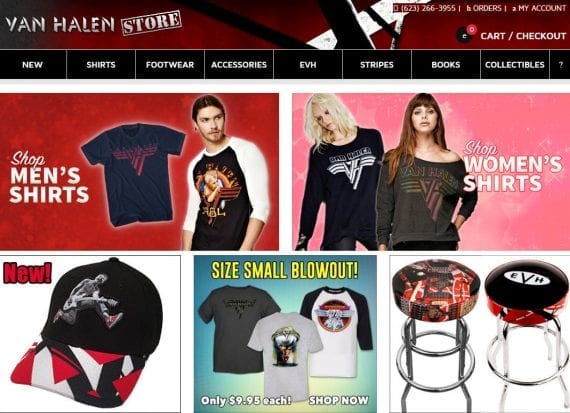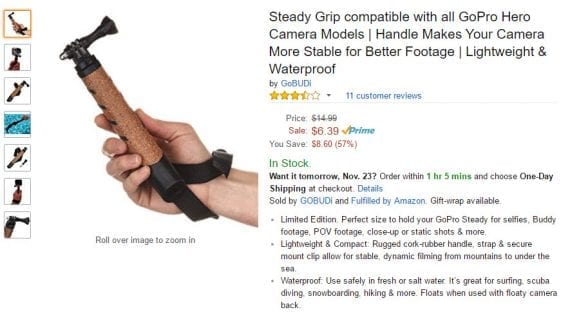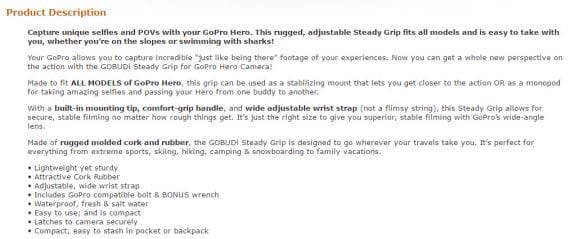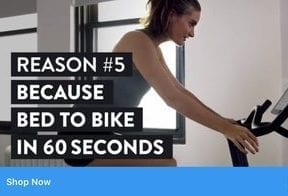It’s time. By Thanksgiving Day, online shopping will kick into high gear. And Cyber Monday may be your store’s biggest revenue day of the year.
While time has run out for site overhauls and intensive product page revamps, there are some things you can do to emphasize the key products you need to sell. Pick a few to start, and be sure to check analytics to determine if these down-and-dirty changes do the trick.
5 Tweaks to Key Products to Spur Holiday Sales
1. Spotlight just one to three products or deals on the home page. Featuring a dozen products on the home page might increase visit time, but it doesn’t do much for truly promoting the items you want to get out the door, especially seasonal ones. Consider how the average time on a page translates to conversions. In most cases, lengthy time spent on the home page translates to indecisiveness, as the shopper isn’t really being given any direction. Make it easy by showcasing the gift to buy this year. While the exit rate of the home page may increase, so may the conversion rate.

Victoria’s Secret simplifies the home page by focusing on just one or two deals.
An alternative to featuring specific products is to use cards to spotlight categories. This concept, which relies on shoppers looking for a line of products rather than specific items, works on many different types of sites and especially well on ones that sell collectibles, fashion, and home decor.

Van Halen Store’s home page uses cards to spotlight the most popular categories rather than individual products. Since the most sought-after products for musical bands are t-shirts, this layout makes sense.
2. Feature product benefits in headlines and tag lines. Instead of relying on just the product name to promote sales and clicks, tell shoppers how the product solves a problem. It’s the difference between telling people what a product is and what it actually does. This not only helps customers choose the right product, but also helps with gift giving ideas, like, “Oh, Steve’s videos are always shaky.”

Those lengthy product names on Amazon may irk you, but they’re designed to grab the shopper by telling the pain points the product solves. In this case, it’s about holding a camera more stable.
3. Use bold and italics to emphasize the most important features of the product. Most people will not read complete product descriptions. Instead, they’ll read the first line or two, and then scan the rest of the copy to determine if they should consider buying. Highlighting key features helps answer questions about what the product does.
If you have time to spend on just a few items, also consider using shorter paragraphs, adding sub-headlines to “sections” of product descriptions and letting one or two compelling features sit on their own lines, centered.

Simply bolding a few words tells people who scan copy that the product fits all models of GoPro Hero, has a built-in mounting tip, and is comfortable and sturdy. The shoppers learns this in less than 20 bolded words.
4. Display percentage of savings the best way. Chances are, the products you really want to push are on sale. The most recognizable savings format is percentage off, and these should always be in 5 percent increments.
Not displaying the percentage saved requires math, and displaying oddball percentages makes people think too much. To make it simple, consider rounding down (never up) when the percentage saved ends in a number other than 0 or 5. For example, if shoppers save 31 percent, display it as 30 percent. Note, the percent savings does not replace the regular price. Sale products should list at least the regular price, sale price, and percentage saved.
5. Display “get it by” messages. For the holiday season, simply stating something is in stock isn’t enough. Shoppers want to know when the item will arrive if it’s ordered today, and they don’t want to have to start the checkout process to find out. Displaying one or more of the following on the product page can help close the sale.
- “Get it by December 1 when you choose standard shipping at checkout.”
- “Get it as early as November 30 when you choose 2nd Day or Overnight at checkout.”
- “Need it by November 27? Order today and choose [expedited method] at checkout.”
Let us know in the comments if you use any of the methods above and how they work out.





